Northwich
| Northwich | |
|---|---|
 Northwich Public Library | |
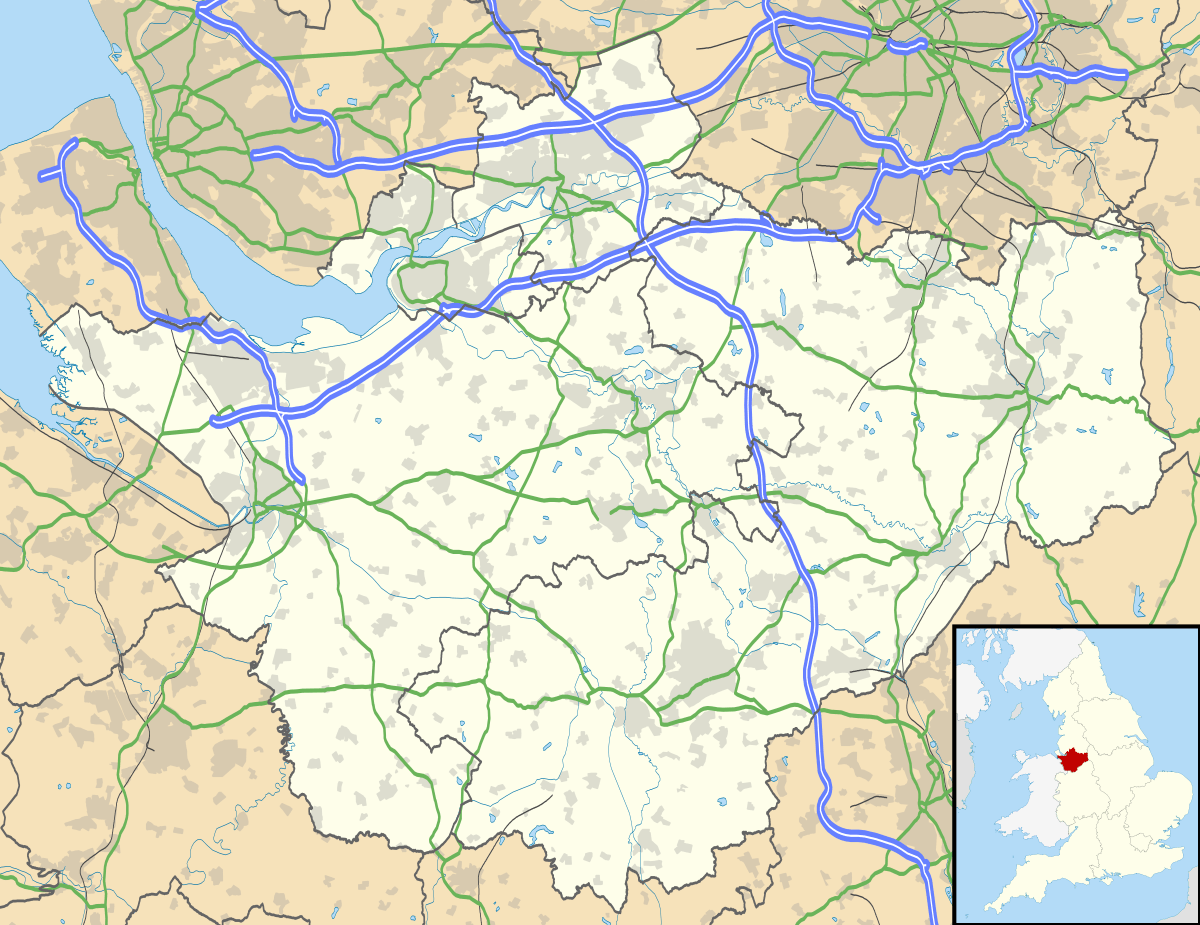 Northwich Northwich shown within Cheshire | |
| Population | 19,924 (Greater Northwich 75,250)(2011 Census)[1] |
| OS grid reference | SJ651733 |
| Civil parish |
|
| Unitary authority | |
| Ceremonial county | |
| Region | |
| Country | England |
| Sovereign state | United Kingdom |
| Post town | NORTHWICH |
| Postcode district | CW8,CW9 |
| Dialling code | 01606 |
| Police | Cheshire |
| Fire | Cheshire |
| Ambulance | North West |
| EU Parliament | North West England |
| UK Parliament | |
| Website |
www |
Northwich is a town and civil parish in the unitary authority of Cheshire West and Chester and the ceremonial county of Cheshire, England. It lies in the heart of the Cheshire Plain, at the confluence of the rivers Weaver and Dane. The town is about 18 miles (29 km) east of Chester and 15 miles (24 km) south of Warrington. 19 miles south of Manchester and 12 miles south of Manchester Airport. Northwich has been named as one of the best places to live in the United Kingdom according to The Sunday Times in 2014.[2]
The area around Northwich has been exploited for its salt pans since Roman times, when the settlement was known as Condate. The town has been severely affected by salt mining, and subsidence has historically been a significant problem. There has been recent investment in mine stabilisation.
History
Early history
During Roman times, Northwich was known as Condate, thought to be a Latinisation of a Brittonic name meaning "Confluence". There are several other sites of the same name, mostly in France; in Northwich's case, it lies at the junction of the rivers Dane and Weaver.[3]
Northwich can be identified through two contemporary Roman documents. The first of these is the Antonine Itinerary, a 3rd-century road map split into 14 sections. Two of these sections, or Itinerary, mention Condate: Route II ("the route from the Wall to the port of Rutupiae") and Route X ("the route from Glannoventa to Mediolanum").[4] The second document is the 7th-century Ravenna Cosmography. This document refers to Condate between the entries for Salinae (now Middlewich, Cheshire) and Ratae (now Leicester, Leicestershire), at the time the capital of the Corieltauvi tribe.[4]
The Romans' interest in the Northwich area is thought to be due to the strategic river crossing and the location of the salt brines.[3] Salt was very important in Roman society;[5] the Roman word salarium, linked employment, salt and soldiers, but the exact link is unclear. It is also theorised that this is the basis for the modern word salary. Another theory is that the word soldier itself comes from the Latin sal dare (to give salt). See History of salt for further details. There is archaeological evidence of a Roman auxiliary fort within the area of Northwich now known as "Castle" dated to AD 70.[3] This and other northwestern forts were built as the Romans moved north from their stronghold in Chester.[3]
The association with salt continues in the etymology of Northwich. The "wich" (or wych) suffix applies to other towns in the area: Middlewich, Nantwich and Leftwich. This is considered to have been derived from the Norse, wic, for bay, and is associated with the more traditional method of obtaining salt by evaporating sea water. Therefore, a place for making salt became a wych-house; Northwich was the most northern of the -wich towns in Cheshire.[6]
Medieval to early modern
The existence of Northwich in the early medieval period is shown by its record in the Domesday Book:[7]
In the same Mildestuic hundred there was a third wich called Norwich [Northwich] and it was at farm for £8.
There were the same laws and customs there as there were in the other wiches and the king and the earl similarly divided the renders.
... All the other customs in these wiches are the same.This was waste when (Earl) Hugh received it; it is now worth 35s.
— Henry Ellis, A General Introduction to Domesday Book
The manor of Northwich belonged to the Earls of Chester until 1237 when the family line died out. Subsequently, Northwich became a royal manor and was given to a noble family to collect tolls in exchange for a set rent.[8]
That salt production continued throughout the centuries and can be seen through John Leland's description of the town in 1540:[9]
Northwich is a pratie market town but fowle,
and by the Salters houses be great stakes of smaul cloven wood,
to seethe the salt water that thei make white salt of.
— cited in Fred H. Crossley, Cheshire
Between 1642 and 1643, during the English Civil War, Northwich was fortified and garrisoned by Sir William Brereton for the Parliamentarians.[3]
The salt beds beneath Northwich were re-discovered in the 1670s by employees of the local Smith-Barry family.[10] The Smith-Barrys were looking for coal, but instead discovered rock salt, in the grounds of the family home, Marbury Hall, to the north of Northwich.
19th century
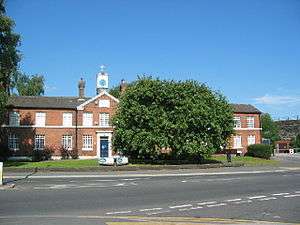
During the 19th century it became uneconomical to mine for the salt. Instead hot water was pumped through the mines, which dissolved the salt.[10] The resultant brine was pumped out and the salt extracted from the brine. This technique weakened the mines and led to land subsidence as they collapsed. Subsidence affected the town and the surrounding landscape.[10] For example, collapses in 1880 formed Witton Flash as the River Weaver flowed into a huge hole caused by subsidence.[11] Subsidence also allegedly accounts for many old timber-framed houses in the town centre, which were better able to withstand the movement of the ground. Some houses were built on a base of steel girders that could be jacked up to level the house with each change in the underlying ground. The town's historical link with the salt industry is celebrated in its museum, which is today in the old workhouse.
In 1874, John Brunner and Ludwig Mond founded Brunner Mond in Winnington and started manufacturing soda ash using the Solvay ammonia-soda process.[12] This process used salt as a main raw material. The chemical industry used the subsided land for the disposal of waste from the manufacture of soda-ash. The waste was transported through a network of cranes and rails to the produce limebeds. This was a dangerous alkaline substance and caused the landscape to be abandoned as unusable.
- Brine baths
The first known swimming baths of Northwich was the Verdin Baths, situated on Verdin Park. It was presented by Robert Verdin in commemoration of the Jublilee of Queen Victoria in 1887. It consisted of a 60-by-20-foot (18.3 m × 6.1 m) cast-iron plunge bath and five slipper baths. It was a largely timbered-framed building. As the entrance was approached, the motto "Cleanliness is next to Godliness" could be clearly seen along the front of the building. Whilst it supplied the needs of many, the accommodation was inadequate for what was required.
The old enemy, subsidence, made its presence felt and in 1911 the Baths Committee reluctantly closed it down altogether. It had given pleasure to about 20,000 or more people a year as well as residents who derived health benefits through taking the Brine Baths. The baths was demolished shortly after August 1912 by a contractor from Preston.[13]
The Northwich Public Baths was constructed following subsidence of the Verdin Park swimming pool. The project was sanctioned on 16 September 1913 with a budget of £11,732 payable over 26 years. It was insured for £10,500. Brunner Mond & Co sanctioned the supply of 10,000 gallons of brine per week. London architect, Mr Franck, who had considerable experience in public baths construction [Mr J Ernest Franck was architect in the constructed Hammersmith Baths, Lime Grove, 1907, now a block of flats], was handed the reins of project management. A great mass of running sand underneath the construction site was discovered and the architect advised that it was necessary for the construction of a ferro-concrete raft under the whole site, at an additional cost of £3000.[14]
Unforeseen circumstances delayed the opening; the First World War had presented difficulties to the contractors and they had experienced their own troubles as well as the Council. The Grand Opening Gala took place on Saturday 28 August 1915. The new Moss Farm pool (at a cost of £1.75 million) eventually replaced the Brine Baths, which closed its doors on 23 January 1991.[14]
Modern development

In 1975 Marbury Country Park was the first area to be reclaimed from dereliction and has become a popular recreational area. In 1987 more land was reclaimed to form Furey Wood and over later years, Cheshire County Council's Land Regeneration Unit reclaimed what is now known as Anderton Nature Park, Witton Flash, Dairy House Meadows, Witton Mill Meadows, and Ashton's and Neumann's Flashes. The area now extends to approximately 800 acres (323 ha) of public space known as Northwich Community Woodlands.[10]
In February 2004 a £28 million programme to stabilise the abandoned salt mines underneath Northwich was begun.[15] The work was funded by the English Partnerships through its Land Stabilisation Programme,[16] introduced to resolve issues associated with unstable mines around England.
The four mines identified for work were Baron's Quay, Witton Bank, Neumann's and Penny's Lane. These mines were chosen because their subsidence was causing problems for the town centre. The stabilisation plan involved removing millions of litres of brine from the four mines and replacing it with a mixture of pulverised fuel ash (PFA), cement and salt. The project was completed in late 2007.[17]
The old Magistrates Court and Memorial Hall have been demolished and been replaced by Memorial Court, a £12.5 million cultural and leisure centre, which offers a pool, dance studios and a gym.
The £80 million Barons Quay Development, a retail and leisure complex will see the creation of more than 300,000 square feet (28,000 m2) of shopping space, together with a new Asda superstore with a petrol filling station, M&S Simply Food store, Odeon cinema, restaurants, cafés, new public spaces and parking. The development is estimated to create up to 1600 jobs. Construction started in late 2014.[18] The cinema opened in December 2016.[19]
Governance
Northwich has been within the county boundaries of Cheshire for a long time. At the time of the Domesday survey (1086) Northwich was in the hundred of Middlewich, but by the 14th century it had become part of the Northwich hundred. This probably happened during the reorganisation of the Hundreds in the 12th century.[3] Northwich has been described as a borough from around 1288, though there is no surviving borough charter.[3]
Northwich originally constituted an area of only 13 acres (53,000 m2) at the confluence of the Rivers Weaver and Dane. The much larger township of Witton cum Twambrooks lay to the east, Leftwich to the south, Castle Northwich to the south-west, and Winnington to the north-west.[20][21]
The manor of Northwich was granted to the Stanley family, later Earls of Derby in 1484, and stayed in the family's hands until the late 18th century. A local board was founded on 26 June 1863 after the Local Government Act 1858 and it purchased the manor from Arthur Heywood Esq. in 1871. In 1875, the local boards for Northwich and Witton cum Twambrooks were amalgamated, and the resultant district was further extended in 1880 to include the whole of Castle Northwich and parts of Hartford, Winnington and Leftwich. On 10 September 1894 these areas were united as the civil parish of Northwich, served by Northwich Urban District Council.[20]
The town was further enlarged in 1936 by the addition of parts of Winnington, Lostock Gralam, Barnton, Leftwich and Rudheath, and again in 1955 when parts of Davenham, Hartford, Rudheath and Whatcroft were added.[22]
The Local Government Act 1972 replaced the Urban District Council of Northwich with a new district (later borough) council: Vale Royal. Vale Royal covered areas previously covered by Northwich UDC (Urban District Council), Northwich RDC (Rural District Council), Winsford UDC and parts of Runcorn RDC. Northwich Town Council now has the powers of a parish council and is now made up of five main districts of Leftwich, Northwich, Castle, Winnington and Witton.
Vale Royal Borough Council was abolished on 1 April 2009, and Northwich now falls within the new unitary authority of Cheshire West and Chester.
Between 1885 and 1983 Northwich gave its name to a parliamentary constituency. Northwich was also split between the Tatton and Eddisbury constituencies until the formation of Weaver Vale for the 1997 general election. The seat is currently held by Mike Amesbury (Labour). [23]
The town coat of arms features the Latin motto "Sal est Vita" meaning "Salt is Life", which can be seen on the town's crest of arms.[24] The town is twinned with Dole in France.[25]
Geography
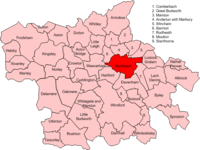
Northwich is situated in the Cheshire Plain at coordinates 53°15′20″N 2°31′20″W / 53.25556°N 2.52222°W (53.255, −2.522). The town is between 15 and 35 metres (49 and 115 ft) above mean sea level.[3] Northwich is surrounded by the following civil parishes, starting due north and proceeding in a clockwise direction: Anderton with Marbury, Marston, Wincham, Lostock Gralam, Rudheath, Davenham, Hartford, Weaverham, Barnton.
Two rivers meet in the town centre, the Weaver and the Dane. The town is surrounded by undulating pasture. Subsidence and the collapse of underground saltworks has created flashes[26] and there are also local meres – for example, to the north is Budworth Mere and to the north-east is Pick Mere.[3]
| Northwich | ||||||||||||||||||||||||||||||||||||||||||||||||||||||||||||
|---|---|---|---|---|---|---|---|---|---|---|---|---|---|---|---|---|---|---|---|---|---|---|---|---|---|---|---|---|---|---|---|---|---|---|---|---|---|---|---|---|---|---|---|---|---|---|---|---|---|---|---|---|---|---|---|---|---|---|---|---|
| Climate chart (explanation) | ||||||||||||||||||||||||||||||||||||||||||||||||||||||||||||
| ||||||||||||||||||||||||||||||||||||||||||||||||||||||||||||
| ||||||||||||||||||||||||||||||||||||||||||||||||||||||||||||
The town is built on Lower Keuper saliferous beds from which salt has been mined. Deposits of alluvium run along the river valleys and cover most of the area of the town. Surrounding the town is deposits of boulder clay and glacial sand and gravel can be found to the north-west.[3]
The climate is generally temperate with few extremes of temperature or weather. The mean average temperature is slightly above average for the United Kingdom as is the average amount of sunshine.[27][28] The average annual rainfall is slightly below the average for the UK.[29] There are few days when snow is lying on the ground, although there are some days of air frost.[30][31]
Demographics
The population of Northwich in 1664 has been estimated as 560.[3] The population of Northwich over the last 200 years has been:
| Population of Northwich since 1801[32] | |||||||||||||||||||||
|---|---|---|---|---|---|---|---|---|---|---|---|---|---|---|---|---|---|---|---|---|---|
| Year | 1801 | 1811 | 1821 | 1831 | 1841 | 1851 | 1861 | 1871 | 1881 | 1891 | 1901 | 1911 | 1921 | 1931 | 1951 | 1961 | 1971 | 1981 | 1991 | 2001 | 2011 |
| Population | 1,338 | 1,382 | 1,490 | 1,481 | 1,368 | 1,377 | 1,190 | 1,244 | 12,256 | 14,914 | 17,611 | 18,151 | 18,381 | 18,732 | 17,489 | 19,592 | 18,136 | 17,098 | 18,316 | 19,259 | 19,924 |
| Sources:[3][33][34][35] | |||||||||||||||||||||
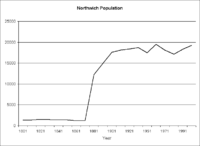
The 2011 Census shows the population of Northwich to be 19,924. This was composed of 9,878 (49.6%) males and 10,046 (50.4%) females. There were 8,808 households.[33] This makes the average household size 2.62, an increase on 2001.
Economics
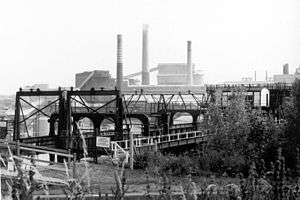
Northwich has been described as having a market since at least 1535, when it was described as a market town by Leland,[3] but there is no surviving charter. The town still has a market today, which is earmarked for refurbishment as part of the Northwich Vision plans.[36]
The town's economy was dominated by the salt industry. However, a list of tolls for goods crossing over Northwich bridge in 1353 shows goods coming into the town, including a wide range of carcasses, fleeces, hides and skins, cloth, fish, alcoholic drinks, dairy products, building materials, household goods, metals and glass, and millstones. This indicates a much wider economic base to medieval Northwich than just the salt trade.[3] Documentary evidence also exists for a mill from 1332 onwards and there is evidence for more than one mill from 1343.[3]
Allied to the extraction of salt was a bulk chemical industry, which became concentrated at the three ICI sites at Winnington, Wallerscote and Lostock. The first industrially practical method for producing polythene was accidentally discovered at the Winnington Laboratory in 1933.[37]
Bakers Frank Roberts & Sons have been associated with the town since 1887 and continues to be based near the town at Rudheath on the A556. Two of Frank Roberts & Sons's three main business divisions, Roberts Bakery and The Little Treats Co, are based in Northwich and Aldred's The Bakers, is in Ilkeston, Derbyshire.[38]
There are many contemporary major employers in nearby Rudheath and Hartford.
Based on the 2001 Census, Northwich had 13,928 people aged between 16 and 74. Of these, 8,908 (64.0%) people were categorised as economically active; 4,268 (30.6%) were economically inactive; 455 (3.3%) were unemployed.[39]
Culture and community
The town has two key annual events. Over the August Bank Holiday weekend, Northwich Festival is held at Moss Farm Sports Complex, featuring four days of music and sport. Since 2011, the town's Medieval Festival has been staged in Verdin Park.
Northwich Memorial Hall was opened in 1960 but closed for redevelopment in 2013, to be replaced by the Memorial Court Facility, opened in 2015. It hosted a range of activities,[40] including the Purple Cactus Comedy Club.[41]
The Harlequin Theatre produces six plays each year, and it is also the home of Northwich Folk Club (which has run continuously since 1977).[42]
The Regal cinema closed in 2007 and was demolished. A cinema in the Barons Quay development opened in 2016.[19]
Northwich has two local newspapers: the Northwich Guardian, published by Newsquest, and the Northwich Chronicle, published by Trinity Mirror. Radio station Shout Radio broadcasts online and covers the mid-Cheshire area including Northwich (territory previously covered by the now defunct Cheshire FM).
Northwich musicians include Steve Hewitt, drummer with Placebo, which provided a song for the soundtrack to the film Cruel Intentions, and Tim Burgess from the Charlatans, a band once managed by Steve Harrison from the town's Omega Music record store.[43]
Local horror author Stuart Neild's first novel, A Haunted Man, was set in the salt mines that run underneath Northwich, combining fact with supernatural fiction. Neild's novels featuring Northwich and other North West locations. A Hollywood film and television series was in development.[44]
Sport
Northwich is the home of three non-league football teams: Witton Albion, Northwich Victoria and 1874 Northwich.
The town has two rugby union sides Northwich RUFC and Winnington Park.
The area also boasts several amateur cricket clubs, including Winnington Park CC, Davenham CC, Weaverham CC, Northwich CC and Hartford CC. Northwich also has a successful competitive swim team – Northwich Swimming Club, first formed in the late 19th century.
Northwich Rowing Club was formed in 1875 in Northwich and continues to row on the River Weaver, producing Olympic and international rowers such as Matt Langridge. The club has its own boat and clubhouse located by The Crescent and holds three events every year, the Autumn Head in November, the Spring Head in April and the Regatta in May. In 2015 the club was the first rowing club from the north of England to win the Junior Coxed Quad Sculls at the Head of the River Fours on the tideway in London. Club crews have also competed in the Henley Royal Regatta, with a crew seeded in 2015 for the first time in the club's history. The club also has a large junior section taking rowers on from age 12.[45]
The Northwich Festival, held at Moss Farm Sports Complex each August includes the UK Strongman-North Competition.[46]
The town also has a long-standing cycling club, Weaver Valley CC. Established in 1962, its members included ex-pro and ITV commentator Paul Sherwen and domestic rider Alan Kemp. The club competes in road racing, time trials, track racing and off-road. The club promotes three road races, a series of circuit races in June at Oulton Park, the Cat and Fiddle hill climb, and cyclo-cross in September.[47] Since 1980, the club has promoted the Cheshire Classic women's cycling road race, held every April. Part of British Cycling's National Road Race Series, it is the longest running race on the women's national calendar. Previous winners include Dame Sarah Storey, Lucy Garner, Lizzie Armitstead, Nicole Cooke and Mandy Jones.[48]
Landmarks and religious sites
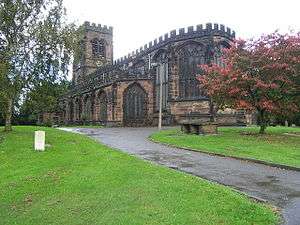
The parish church is known as St. Helen's Witton. It is a Grade I Listed Building. The church initially developed as a chapel of ease associated with the parish of Great Budworth to serve the local community, known as the Chapel of Witton. There is no known date for the creation of this chapel, but it is thought to have existed in the 13th century. None of this building exists in the current church. There is no documentary evidence to indicate the dates of the older parts of the current building. However, stones in the fabric of the porch carry inscriptions attributed to "Ricardus Alkoke Capellanus". This name matches documents concerning land in Northwich and Lostock Gralam dated 1468, but this cannot be used to date the church accurately.[49]
It was not until 7 August 1900 that the parish of Witton (otherwise Northwich) was formed from parts of Great Budworth, Davenham and other surrounding parishes.
The present St Wilfrid's (Roman Catholic) church was built in 1866. The current Northwich Methodist Chapel was opened in 1990, but there has been a Methodist presence in the town at least since 1774, when John Wesley laid the foundation stone of the first chapel in the London Road area.
The Northwich Union Workhouse opened in 1837 following the Poor Law Amendment of 1834 that standardised the system of poor relief throughout Britain. The building is now the Weaver Hall Museum.
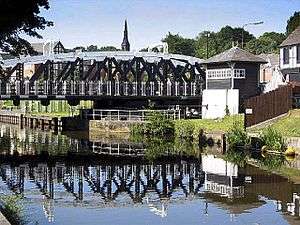
The Dock Road Edwardian Pumping Station is a Grade II Listed Building originally built by Northwich Urban District Council in 1913. For over 60 years it was used for pumping sewage from parts of Northwich to the Wallerscote Treatment Works. Before it was built, untreated sewage was discharged directly into the River Weaver, causing widespread pollution.
Two swing bridges, Hayhurst Bridge built in 1898, and Town Bridge built in 1899, cross the Weaver at Northwich. The bridges were the first two electrically powered swing bridges in Great Britain[50] and were built on floating pontoons to counteract the mine subsidence. They were designed by Colonel John Saner.
The Floatel Northwich was moored on the Weaver near the confluence of the two rivers, but was closed when the owners, The Real Hotel Company plc, went into administration in January 2009.[51] It has since been removed. It was the UK's only floating hotel.
Transport
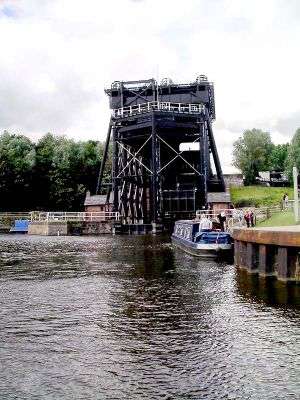
The key historical mode of transport is water. By 1732 the River Weaver was improved from Frodsham Bridge to Winsford Bridge and eventually allowed vessels up to 160 tonnes (160,000 kg) to travel up to Northwich Bridge.[3] The Trent and Mersey Canal, opened in 1775, passed to the north of Northwich because of objections from the trustees of the Weaver Navigation. However, the canal passed salt deposits near the village of Marston, and many of the later salt mines were based along its banks including the Lion Salt Works. The Anderton Boat Lift was opened in 1875[52] to connect the canal and river systems. It was fully restored in 2002 and now houses a visitor centre.[52]
The road system around Northwich can be dated back to the Roman times. The A556 and A559 follow the route of the Roman road that runs from Chester to York.[3] The A556 diverts away from the route of the Roman road following a new route to the south of the town acting as the town's bypass. The Chester to Manchester road became a Turnpike in 1769.[3] The A530, known as King Street, also passes near to the town, and this follows the route of the Roman road that connected Warrington and Middlewich. The old route to Warrington and the north from Middlewich, however, was replaced by a new route through Knutsford, which became a turnpike in 1753.[3] Northwich is connected to the motorway network to the north of the town via the A559 onto the M56 motorway; and to the east of the town via the A556 at Junction 19 of the M6 motorway.
The railway came to the town in 1863 when the Cheshire Midland Railway constructed its line from Knutsford. The West Cheshire Railway built its line to Helsby in 1869. Passenger trains from Northwich to Chester via Delamere commenced in 1875. The route through Northwich is now marketed as the Mid-Cheshire line.[53] Northwich railway station, last rebuilt in 1897,[3] is on the line from Chester to Manchester Piccadilly. There are also stations within close vicinity at Greenbank, also on the Mid-Cheshire line, and Hartford (on the West Coast Main Line).
There are bus routes between Northwich and a number of local towns, and villages including Weaverham, Hartford, Crewe, Warrington, Kelsall and Chester.[54]
Education
Northwich and its surroundings has a number of schools and colleges. Sir John Deane's College is now a sixth form college, but was originally formed as a grammar school in 1557.[55] The school was originally known as Witton Grammar School and was erected close to Witton Chapel. The school moved to its current location, to the south of the town, in 1907–08.[3] There is now also further education available through Mid Cheshire College's London Road Studios.[56] The area also boasts The Grange School, Northwich, one of the leading independent schools throughout the entirety of Cheshire. Primary education include:
- The Grange Junior School
- Witton Church Walk CofE Primary School
- Victoria Road Primary School
- Charles Darwin Community Primary School
- Winnington Park Community Primary and Nursery School
- St. Wilfrid's Catholic Primary School
- Hartford Manor Primary School
- Hartford County Primary School
- Kingsmead Primary School was shortlisted for the Prime Minister's Better Public Building award in 2005.[57]
- Rosebank School is a school for autistic children aged 3–11 years.
During the 19th century many new schools were founded and by 1850 twelve 'academies' were recorded in the area.[3] The town is now served by County High School Leftwich, a specialist media arts college, while University of Chester Academy Northwich,[58] a specialist performing arts college and Hartford High School[59] both admit pupils from Northwich. There are also several primary schools in the area. St. Nicholas Catholic High School is also in the local vicinity, and performs well on national exam boards, coming second in the whole of Cheshire.
In November 2005, as part of the Northwich Vision, a refurbishment of the town's railway station included a Centre called Zone that promotes lifelong learning by offering people the opportunity to access a range of online and taught courses.[60]
Notable people
- Industry
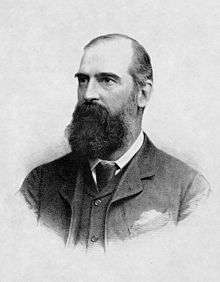
- Peter Drinkwater (1750 – 1801) an English cotton manufacturer and merchant. In 1782 he opened his first cotton mill on the River Weaver in Northwich
- Sir Joseph Verdin, 1st Baronet (1838 in Witton – 1920) ran a family salt business known as Joseph Verdin & Sons with his brothers, Robert and William, lived at The Brockhurst in the town.
- Ludwig Mond (1839–1909) German-born co-founder of Brunner Mond, a soda factory in Winnington
- Sir John Brunner, 1st Baronet PC DL (1842–1919) founder of chemical firm Brunner Mond in 1873, MP for Northwich 1885–1886 and from 1887–1910, lived at Winnington Hall [61]
- William James Yarwood (1851–1926) shipbuilder and proprietor of W.J. Yarwood & Sons, a local shipbuilding business
- Creative Arts

_-_Salon_Livres_et_Musique_2014%2C_Deauville_(cropped).png)
- Alethea Lewis (1749 at Acton - 1827) an English novelist, she centred on profound Christianity and virtue.
- Bob Crossley (1912 in Northwich – 2010) an abstract artist who worked in oil and acrylic and lived in Cornwall from 1959
- Percy M. Young (1912 in Northwich – 2004) a British musicologist, editor, organist, composer, conductor and teacher
- Peter Gammond (born 1925 in Northwich) a British music critic, writer, journalist, musician, poet, and artist.
- Robert Westall (1929–1993) the children's author lived in the town and taught at Sir John Deane's Grammar School.[62]
- Sue Birtwistle (born 1945 in Northwich) a producer and writer of television drama [63]
- Rupert Holmes (born 1947 in Northwich) composer, songwriter and author, now lives in New York
- Malcolm Garrett RDI FRSA (born 1956 in Northwich) a British graphic designer
- Jennifer Saunders (born 1958) actress and comedian, attended Northwich Girls' Grammar School
- Jim Tavaré (born 1963) an English stand-up comedian, actor, and musician. He attended art school in Northwich.
- Moira Buffini (born 1965) an English dramatist, director, and actor.
- Tim Burgess (born 1967) an English singer-songwriter and lead singer of the alternative rock band The Charlatans
- Cathie Pilkington RA (born 1968) is a British sculptor, she attended the North Chester College of Art in Northwich
- Stuart Neild (born 1970 in Northwich) horror author [64]
- Steve Hewitt (born 1971 in Northwich) an English musician, singer-songwriter, record producer and former drummer for the band Placebo, 1996–2007
- Helsinki Seven (formed 2006) are an alternative rock band from Northwich,
- Addictive (formed 2008) an English musical duo based in Northwich consists of Louise Bagan and Aisha Stuart
- Politics
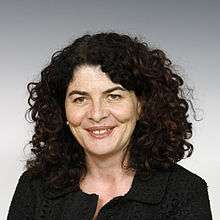
- Robert Verdin (1836 in Witton – 1887) a salt manufacturer, philanthropist and MP for Northwich 1886/1887
- Sir Philip Holland (1917 in Northwich – 2011) Conservative MP for Acton 1959-1964 and for Carlton 1966-1983
- Paul Dean, Baron Dean of Harptree PC (1924 in Northwich – 2009) Conservative MP for North Somerset 1964 to 1983
- John Greenway (born 1946) MP for Ryedale, was born and educated in the town [65]
- Arron Banks (born 1966 in Northwich) a British businessman and political donor.
- Diana Johnson (born 1966) MP for Hull North was born and educated in the town
- Sport
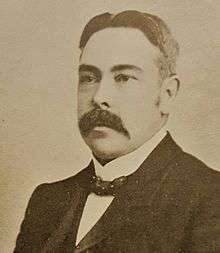
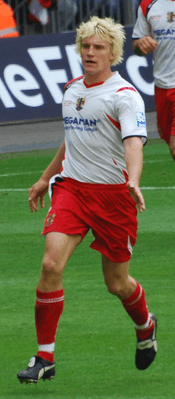
- Charles James Hughes (1853 in Northwich –1916) an English footballer, referee, and co-founder of Northwich Victoria [66]
- George Elmore (1880 in Witton – 1916 Somme) an English professional football player with about 200 caps
- John Boden (1882 in Northwich – 1946) an English professional footballer who played over 300 pro games
- Billy Harrison (1886 in Wybunbury – 1948) an English footballer with over 400 caps, mostly for Wolves
- Jack Eyres (1899 in Northwich – 1975) an English footballer with over 250 caps
- Sid Collins Jr. (1912 in Northwich – 1983) an English professional golfer. He won the Welsh Professional Championship in 1938 and 1952
- Tom Manley (1912 in Northwich – 1988) an English professional footballer, over 300 appearances for Manchester United and Brentford, he later managed hometown club Northwich Victoria F.C.
- Zandra Nowell (born 1936 in Northwich) a British alpine skier, competed in the 1956 Winter Olympics
- Malcolm Arnold OBE (born 1940 in Northwich) an athletics coach working for UK Athletics since 1974.
- Len Bathurst (born 1959 in Northwich) an English former professional football player with over 350 caps
- Mike Whitlow (born 1968 in Northwich) an English former professional footballer with 398 caps, mainly for Leicester City & Bolton Wanderers
- Michael Oakes (born 1973 in Northwich) former goalkeeper for Aston Villa and Wolverhampton Wanderers
- Andy Oakes (born 1977 in Northwich) former goalkeeper for Derby County
- Matt Langridge MBE (born 1983) rower and silver medallist at the 2008 Summer Olympics, started rowing at Northwich Rowing Club
- Mark Roberts (born 1983 in Northwich) is an English professional footballer with 440 caps
- Craig Jones (1985–2008) an English motorcycle racer. He grew up in Northwich
- and
- Eaton Hodgkinson FRS (1789 in Anderton – 1861) an English engineer, a pioneer of the application of mathematics to problems of structural design.
- William Allen Whitworth (1840–1905) was an English mathematician and a priest in the Church of England, [67] schooled at the Sandicroft School in Northwich
- Dr Harold Drinkwater (1855-1925) physician and botanical artist, born and raised in Northwich
- Geoffrey Cheshire FBA (1886 in Northwich – 1978) an English barrister, scholar and influential writer on law
- Arthur Dodd (1919 in Northwich – 2011) served in the British Army during WWII and was a Prisoner of War at Auschwitz
- Mary-Ann Ochota (born 1981 in Northwich) a British broadcaster and anthropologist specialising in archaeology, social history and adventure factual television
Twin town
Northwich is twinned with:
See also
References
- ↑ "Parish population 2011". Retrieved 27 May 2015.
- ↑ Bebbington, Gina. "Northwich is one of the best places to live in the UK – again". Northwich Guardian. Archived from the original on 19 March 2014. Retrieved 19 March 2014.
- 1 2 3 4 5 6 7 8 9 10 11 12 13 14 15 16 17 18 19 20 21 22 Shaw, Mike; Clark, Jo. "Cheshire Historic Towns Survey: Northwich: Archaeological Assessment" (PDF). Cheshire County Council. Archived from the original (PDF) on 18 March 2009. Retrieved 1 May 2008.
- 1 2 "Condate". Roman-Britain.org website. Archived from the original on 3 October 2008. Retrieved 1 September 2008.
- ↑ "History: Romans". The Salt Manufacturers Association. Archived from the original on 20 September 2008. Retrieved 3 September 2008.
- ↑ Taylor, Isaac (1864). Words and Places, Or, Etymological Illustrations of History, Ethnology, and Geography. Macmillan. p. 578.
- ↑ Ellis, Henry (1833). A General Introduction to Domesday Book. p. 543. Retrieved 2 September 2008.
- ↑ "Cheshire Townships, Cities & Major Villages". Manchester UK website. Archived from the original on 12 June 2008. Retrieved 2 September 2008.
- ↑ Crossley, Fred H. (1949). Cheshire.
- 1 2 3 4 "History of the Northwich Woodlands". Northwich Community Woodlands website. Archived from the original on 6 January 2009. Retrieved 4 September 2008.
- ↑ "Northwich Woodlands" (PDF). Cheshire County Council website. Archived from the original (PDF) on 18 March 2009. Retrieved 4 September 2008.
- ↑ "History of Brunner Mond". Brunner Mond website. Retrieved 2 September 2008.
- ↑ "Verdin Baths, 1887-1911". Archive of Northwich Brine Baths. Archived from the original on 26 August 2009. Retrieved 27 December 2016.
- 1 2 "Verdin Baths, 1887-1911". Archive of Northwich Brine Baths. Archived from the original on 26 August 2009. Retrieved 27 December 2016.
- ↑ "£28 million funding approved for Northwich salt mines". English Partnerships website. Archived from the original on 9 June 2007. Retrieved 5 December 2006.
- ↑ "Land Stabilisation Programme". English Partnership website. Archived from the original on 17 September 2008. Retrieved 4 September 2008.
- ↑ "Northwich's Salt Mines Have Been Stabilised". Northwich Vision website. Retrieved 4 September 2008.
- ↑ "Barons Quay". Northwich Riverside. Retrieved 7 February 2014.
- 1 2 Phil McCann (15 December 2016). "Barons Quay: Northwich cinema opens in £80m regeneration scheme". BBC. Retrieved 16 December 2016.
- 1 2 Kelly's Directory of Cheshire (1896), p.409
- ↑ Ordnance Survey (1875). Cheshire Sheet XXXIV (SW), 1st edition
- ↑ Vision of Britain. Northwich U.D.. Retrieved on 24 December 2008
- ↑ "Labour gains Cheshire target seats". Bbc.co.uk. 9 June 2017. Retrieved 21 September 2018.
- ↑ "Northwich Town Council". ChivalricHeraldry.co.uk. Retrieved on 2 September 2008.
- ↑ Vale Royal Borough Council. "Twinning – twin town information". ValeRoyal.gov.uk. Archived from the original on 21 November 2008. Retrieved on 2 September 2008.
- ↑ "Flash" (2nd ed.). OED. 1989. Retrieved 12 February 2012.
'A pool, a marshy place': also later (1883),'Flash (Cheshire), a subsidence of the surface due to the working of rock salt and pumping of brine.'
- ↑ "Average annual mean temperature". Met Office website. Archived from the original on 1 August 2013. Retrieved 31 August 2008.
- ↑ "Average annual sunshine". Met Office website. Retrieved 31 August 2008.
- ↑ "Average annual rainfall". Met Office website. Retrieved 31 August 2008.
- ↑ "Days of snow lying". Met Office website. Retrieved 31 August 2008.
- ↑ "Days of air frost". Met Office website. Archived from the original on 5 July 2007. Retrieved 31 August 2008.
- ↑ The totals shown are for Northwich township (1801–1871), Northwich Local Board (1881–1891), Northwich Urban District (1901–1971), and Northwich Civil Parish (1981–2001). There were changes to the boundaries of these areas in 1873, 1936 and 1955, which affected the subsequent census figures
- 1 2 "Parish Headcounts: Northwich CP". National Statistics website. Retrieved 5 December 2006.
- ↑ "Cheshire Parishes: Northwich". GENUKI website. Retrieved 31 August 2008.
- ↑ "Key Figures for 2011 CensusKey Figures for 2011 Census".
- ↑ "Development Areas". Northwich Vision website. Archived from the original on 21 November 2008. Retrieved 2 September 2008.
- ↑ "Winnington history in the making". This is Cheshire. Archived from the original on 21 January 2010. Retrieved 5 December 2006.
- ↑ "Welcome to Frank Roberts & Sons Ltd". Frank-roberts.co.uk. 12 February 2018. Retrieved 21 September 2018.
- ↑ "Parish Profile – Work and Qualifications: Northwich CP". National Statistics website. Retrieved 9 January 2007.
- ↑ "Northwich Memorial Hall". Vale Royal Borough Council website. Archived from the original on 11 May 2008. Retrieved 28 August 2008.
- ↑ Goodban, Dave (10 March 2009). Purple Cactus Comedy Club makes a welcome return to Northwich. The Mid Cheshire Chronicle. Retrieved 4 May 2009.
- ↑ "Home". Northwichfolk.co.uk. Retrieved 21 September 2018.
- ↑ "Charlatans, The Biography". Musician Biography website. Retrieved 29 August 2008.
- ↑ "Once upon a time in the Midlands". BBC Website. Retrieved 5 December 2006.
- ↑ "Northwich Rowing Club". Northwich Rowing Club. Retrieved 27 December 2016.
- ↑ "UK Strongman North". UK Strongman North website. Retrieved 6 September 2009.
- ↑ "Weaver Valley CC". Weaver Valley CC. Retrieved 27 December 2016.
- ↑ "Cheshire Classic". Cheshire Classic website. Retrieved 5 January 2013.
- ↑ Harries, Michael & Lynch, Colin – An Illustrated History of Northwich Parish & Church, 1981, ISBN 0-9507648-0-9
- ↑ "Hayhurst Bridge Project Is First Step In Ambitious Vision". British Waterways. Archived from the original on 12 August 2007. Retrieved 1 April 2008.
- ↑ "Floatel". Northwich Guardian. Retrieved 13 June 2009.
- 1 2 "Anderton Boat Lift". Anderton Boat Lift website. Retrieved 3 September 2008.
- ↑ Griffiths, R.P. (1947). The Cheshire Lines Railway. Oakwood Press.
- ↑ "Cheshire County Council Bus Map" (PDF). Cheshire County Council. Archived from the original (PDF) on 29 September 2007.
- ↑ Carlisle, Nicholas (1818). A Concise Description of the Endowed Grammar Schools in England and Wales. London: Baldwin, Cradock and Joy. pp. 129–136.
- ↑ "Mid Cheshire College locations". Archived from the original on 8 March 2009. Retrieved 10 February 2009.
- ↑ "Kingsmead primary school, Northwich, Cheshire". Better Public Building. Archived from the original on 18 February 2009. Retrieved 4 September 2010.
- ↑ "Rudheath High School catchment area". Maps.cheshire.gov.uk. Retrieved 10 February 2009.
- ↑ "Hartford High School catchment area". Maps.cheshire.gov.uk. Retrieved 10 February 2009.
- ↑ "Get On Board With Lifelong Learning". Northwich Vision website. Retrieved 2 September 2008.
- ↑ Koss, Stephen E. (1970). Sir John Brunner: Radical Plutocrat 1842–1919. Cambridge University Press. pp. 28–29. ISBN 0-521-07906-3.
- ↑ "Robert Westall: From art tutor to world famous author". This is Cheshire. Retrieved 14 March 2008.
- ↑ "Talented trio awarded honorary doctorates". University of Chester. 10 March 2008. Archived from the original on 26 October 2008. Retrieved 2 September 2008.
- ↑ "Biography". Stuart Neild website. Archived from the original on 8 October 2007. Retrieved 2 September 2008.
- ↑ "John Greenway biography". Guardian Unlimited website. London. Archived from the original on 16 December 2004. Retrieved 2 September 2008.
- ↑ "Is there an Old Wittonian Society?". Archived from the original on 30 March 2012. Retrieved 18 August 2011.
- ↑ Dictionary of National Biography, 1912 supplement, Whitworth, William Allen retrieved 23rd July 2018
External links
| Wikimedia Commons has media related to Northwich. |
| Wikivoyage has a travel guide for Northwich. |
